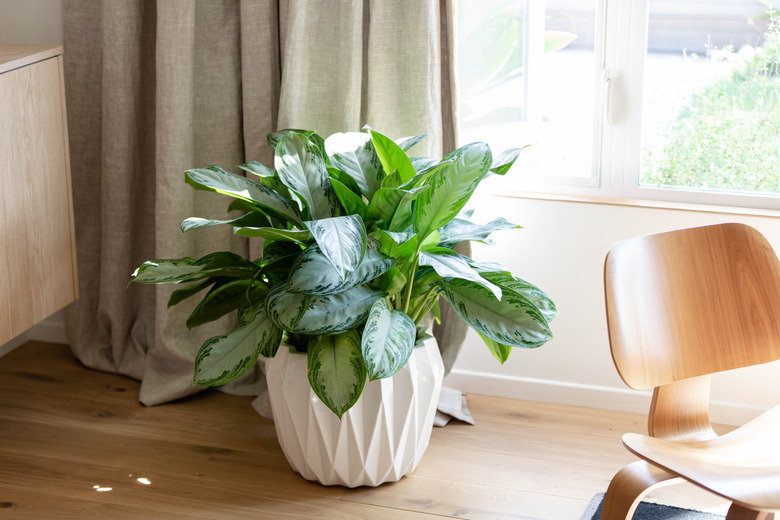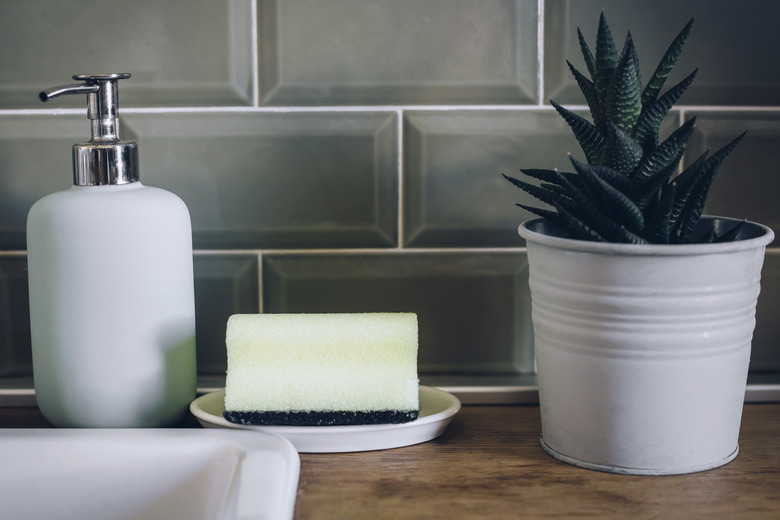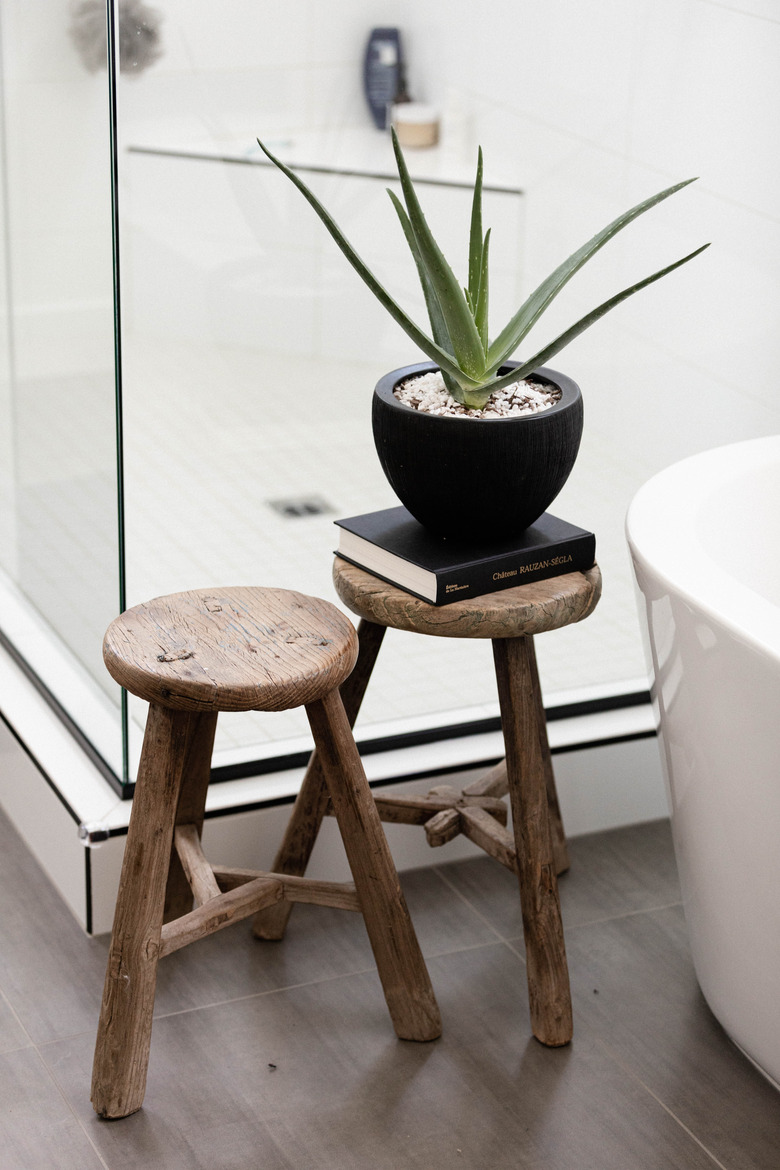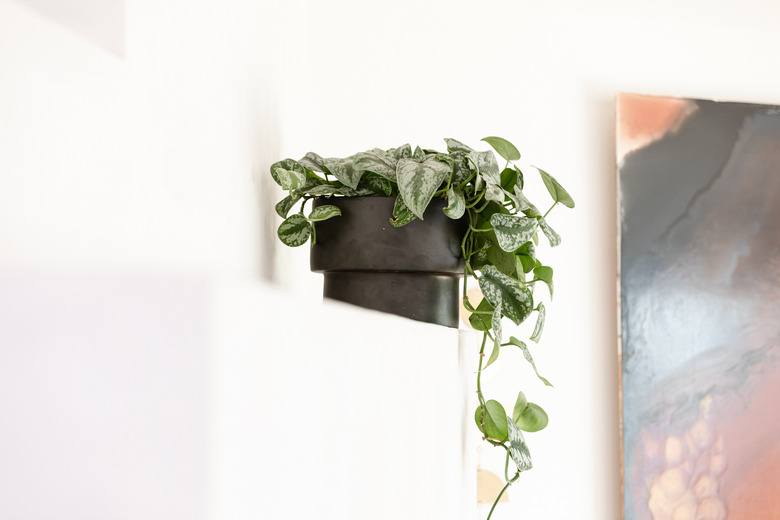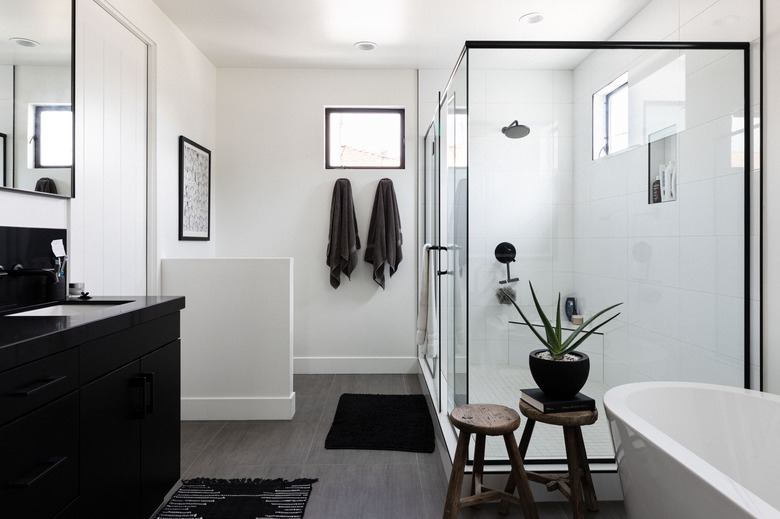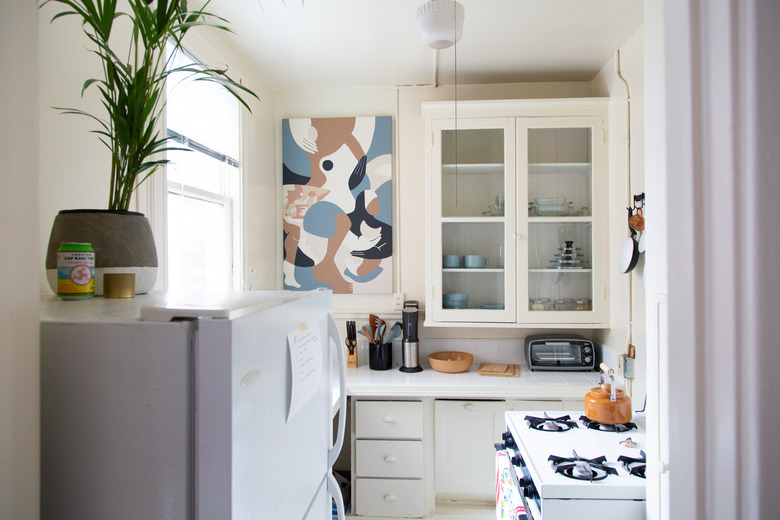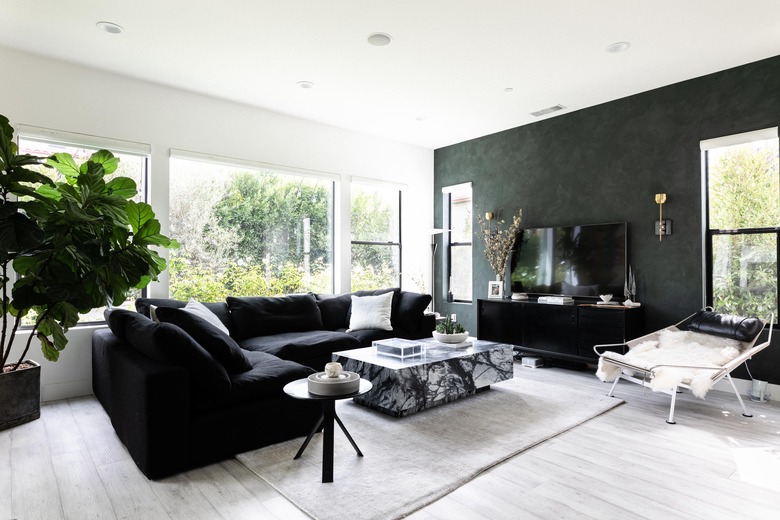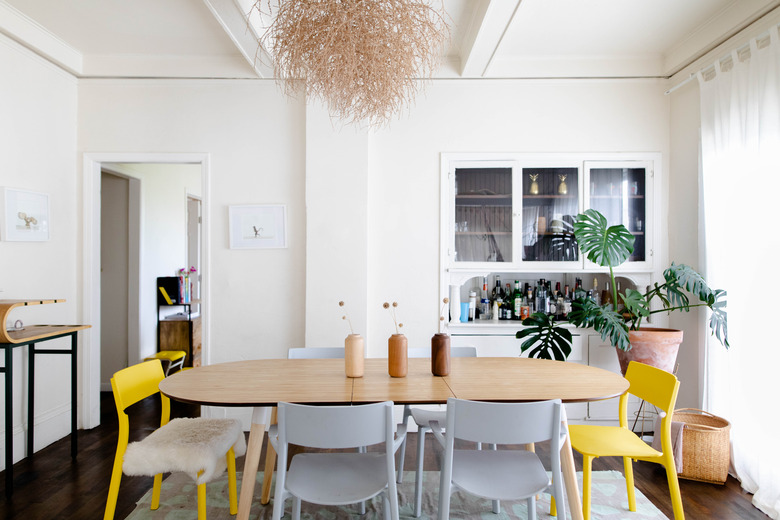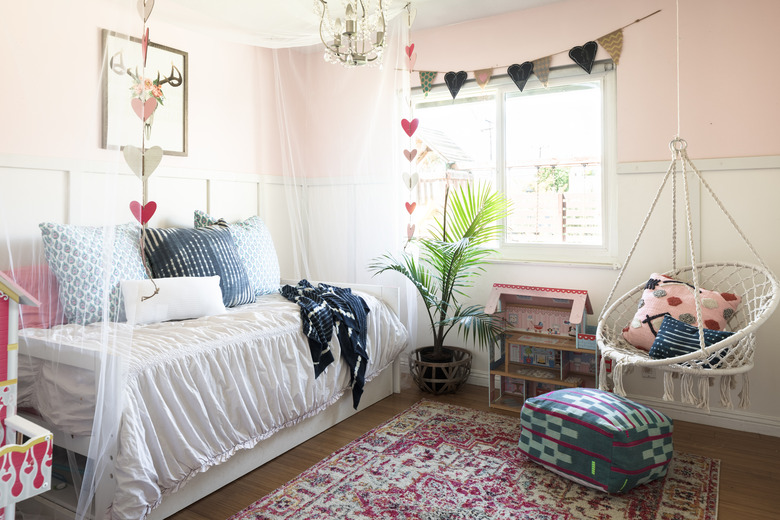Indoor Plant Care: Tips And Helpful Advice For Literally Everyone
We may receive a commission on purchases made from links.
If you've ever cruised a new city checking out residential neighborhoods, you know it's the tree-lined streets that call to you, giving the entire block personality and charm. Indoor plants work the same magic on home interiors, making your living space a unique expression of your personal taste. If you are thinking of jumping into the indoor plant game, don't hesitate!
Bringing indoor plants into your home is always a wonderful idea, but you'll have a better experience if you know a thing or two about how to select and care for houseplants. We've gathered together the information you need to proceed with confidence (brown thumbs, we're talking to you, too!), complete with suggestions and tips enough to inspire novice and expert alike.
Factors to Consider BEFORE Selecting Plants
Factors to Consider BEFORE Selecting Plants
First off, here's the wrong way to select houseplants: Stroll through a garden store and fill a cart with the potted plants that appeal to you. This spontaneous sort of "falling in love" approach, while romantic, doesn't work well for houseplants and can lead to wilted foliage faster than you can imagine.
Instead, take the longer view. Consider what conditions you can offer plants, then go for plants that do well in those conditions. Assess the kind of sun or shade your rooms get, the humidity available, and whether the temperature is stable or fluctuating. Also think about how much time and effort you want to put into maintenance.
This reflection will help you find the right plants for your situation. Some plants like bright light location while others prefer low-light situations. You'll find low-maintenance, forgiving plants that thrive on neglect and others that need lots of specialized attention. In short, you'll be a happier plant owner if you pick plants that suit your home and lifestyle.
Plants That Win the Popularity Contest
Plants That Win the Popularity Contest
Popular plants are popular for good reason. Usually they are relatively inexpensive, attractive, and easy-care, but sometimes they just happen be cool and trending. Favorite houseplants vary from state to state. A recent study tracked data trends from Google to find out which plants were subjects of most searches in each state. If you want to populate your place with the plants of the moment, here are a few to consider:
-
Aloe vera: The most popular houseplant in the nation is aloe vera. The easy, attractive succulent was the most queried plant in eleven of the 50 states in the study and could be a great choice for you.
This stemless plant has thick, fleshy leaves fanning out from the stem and you can use the gel to sooth the sting of a burn. Aloes need bright indirect light, frugal irrigation, and excellent drainage.
-
Poinsettia: Poinsettias are among the top plants for the holidays and the most googled houseplants in four states. Their red "flowers" are actually modified red leaves that attract pollinators to the small yellow blossoms. Most poinsettias are sold at Christmas, but they make good houseplants year-round. Keep the plant healthy for the holiday season by placing it on a sunny window and watering when the soil dries out. For year-round houseplants, you'll need to put in more effort to get the plant ready to bloom again.
-
Peace lily: In three states, the most popular plant is the peace lily with its dark green leaves up to 12 inches long and striking white flowers. They grow happily as attractive indoor plants, doing double duty by removing air pollutants. These plants prefer dappled sunlight and consistent moisture. Provide irrigation when the top of the soil dries, but don't wait too long or the leaves will yellow and wilt. The soil should be kept slightly moist.
Easiest of the Easy-Care Plants
Easiest of the Easy-Care Plants
Low-maintenance plants work for almost everybody, from college students to busy couples. These are plants that forgive your neglect, shrugging off a forgotten watering and accepting a wide range of light conditions. Need a housewarming gift? These are also the plants to offer.
Spider plant: Is there anyone who doesn't love an oh-so-easy spider plant? Their white and green banded leaves are thin as ribbons and form a lovely mound of foliage, but their true claim to fame is the spider babies growing from the tips of long stalks. Spider plants are supremely easy to grow, tolerating low-light and bright light and irregular irrigation. And they remove 90 percent of the toxins in your indoor air in just a couple days.
Golden pothos: The leaves on a pothos are extremely ornamental, large, rounded and showy. But the plants are very easy-care. Let yours cascade down from a hanging basket or climb upward along a support, leaves on full display. These are low-light plants only requiring a little sun and a little water. Prune them whenever they seem too long and, if you want more pothos, just root those cuttings in soil or water.
ZZ plant: Here's a plant that's tough enough to survive placement in a kitchen, dorm room, or busy office and is sufficiently trendy for an art studio. The ZZ plant is tall and architectural with glossy, green leaves as big as your hand positioned on an upright stem. And it's virtually indestructible. If you give it a tad of indirect sun and resist the urge to water too much, the ZZ sits pretty in its corner. That makes it a top choice for a house-warming gift to a friend with brown thumb. The downside: Its leaves are poisonous if you eat them — so don't!
Beautiful, Exotic, and Tricky Plants
Beautiful, Exotic, and Tricky Plants
Sometimes beauty is impossible to resist, and we've all been there. If you've fallen for a truly gorgeous exotic plant, it may be worth the risk of heartbreak if it doesn't like living chez vous. If you long for botanical beauty but haven't yet found something that moves you, we propose these stand-outs, truly spectacular but not total prima-donnas.
- Caladium: These amazing foliage plants look like they can up and fly away on their huge papery leaves painted in an explosion of whites, greens, reds, and pinks. They will catch every eye as coffee table plants and elicit more than a few oohs and aahs. Caladium is a little picky about hating direct light and demanding constantly moist soil, but can you resist such beauty?
- Jasmine: If frothy blooms and blow-you-away fragrance are on your "must" list, here's a shrub often found on the patio but perfectly divine as an houseplant: jasmine (Jasminum polyanthum). You'll pass into the jasmine room a hundred times a day to revel in the white blooms and breathe in the heady scent, especially powerful at night. These fancy plants require bright light, well-draining soil, and regular irrigation.
- Orchid: Orchids have a reputation for being picky, but if you fall for the spectacular blossoms, you won't mind the extra effort. There are so many varieties and cultivars, many offering gorgeous scents, like Miltoniopsis santanaei, a small orchid with snowy, rose-scented blossoms. Orchids need less water than other plants, special orchid food and orchid-specific potting mix.
Location, Location, Location: Best Plants for Each Room
Location, Location, Location: Best Plants for Each Room
Do some plants work better in some rooms? Well, let's put it this way: There are houseplants that work well in every single room of your house, and that's saying a lot. The kitchen can be hot, the bathroom steamy, the office low-light, and the entryway exposed to air drafts. Here are our picks for plants for specific rooms:
Kitchen Plants: We all know that if you can't stand the heat, you should stay out of the kitchen. But when you are seeking houseplants for the kitchen, keep in mind that kitchens aren't consistently hot. For a kitchen, you'll need houseplants that can tolerate fluctuating air temperature, and we're ready with some great options:
- Cast iron plant: The cast iron plant is a resilient evergreen with large, bright leaves that look right at home on the kitchen counter. It tolerates extreme heat and fluctuating temperatures, humidity and dry heat. Nearly fuss-free, it's an easy-care houseplant for a low-light kitchen.
- Ponytail palm: This cute little plant is not really a palm, but it will thrive in your well-lit kitchen. Give it lots of indirect light and it will take whatever else you toss its way, including temperature and humidity swings. Native to hot, dry regions of Mexico, the ponytail palm won't blink if its placed next to a stove that dries out the air. Bonus points since these plants clean benzene, formaldehyde, and carbon monoxide from the air.
Living Room Plants: When it comes to a living room, decor dictates plant choice. Invite in a houseplant that matches the ambiance of the space.
- Boho-chic: Go for string of pearls succulents, idiosyncratic houseplants that look a little like those plastic pop-apart beads you played with as a kid. String of pearls is a quirky succulent with foliage like green peas strung on hanging stems. Give the plant indirect light and excellent drainage, and wait for the soil to dry out before watering.
- Midcentury: When your living room is filled with midcentury decor, a perfect plant would be a tall, stand alone specimen with plenty of pizzazz, like a fiddle-leaf fig. These ficus plants feature large, violin-shaped leaves positioned architecturally on an upright trunk. They require indirect light and moist soil.
Dining Room Plants: Some people think that the only plants that should be found in the dining room are veggies, but the sun has set on the "plants-belong-outside" mentality. Indoor plants are known to improve your mental and physical health, and they are just plain happy-making.
We like big, bold plants in a sunny dining room, and here are two of our favorites: elegant parlor palm, a vibrant foliage plant offering a lush explosion of green fronds, creating the look of old Victorian elegance, and croton, with its blazing golden leaves splashed with bright colors. Both need good light, well-draining soil and regular water.
Bedroom Plants: Plants in the bedroom? You better believe it. We think everyone should have a plant in their sleeping place, and some are perfect for the placement, offering a touch of natural beauty and also helping you sleep. Two to consider:
- The areca palm adds tropical allure with its airy, ribbon-like green leaves, a six-foot version of the big palms in Beverly Hills. And arecas are absolutely tops in cleaning toxics from the air as well as serving as natural air humidifiers.
- Gardenia plants are delightful and romantic with their glossy ivory flowers, smooth green leaves and seductive fragrance.
Bathroom Plants: What's the secret to finding the best plants to put in your bathroom? You'll want to select among those that are happy in whatever light your bathroom offers.
- For less-than-sunny bathrooms, you can't do better than the queen of the shade garden, rex begonias. Their rich leaves and bright blooms love the humidity and warmth of a bathroom.
- For medium-light bathrooms, go with ferns, low-maintenance and attractive foliage plants that thrive on bathroom humidity. Pick any fern that pleases you, from airy asparagus fern with its lacy fronds, or the classic Boston fern with its arching sword fronds, or perhaps a crocodile fern is right for you.
- And then there are plants that will thrive inside your shower. Really! One is the tropical pitcher plant, those engaging plants with the distinctive "pitchers" that attract insects to their doom.
